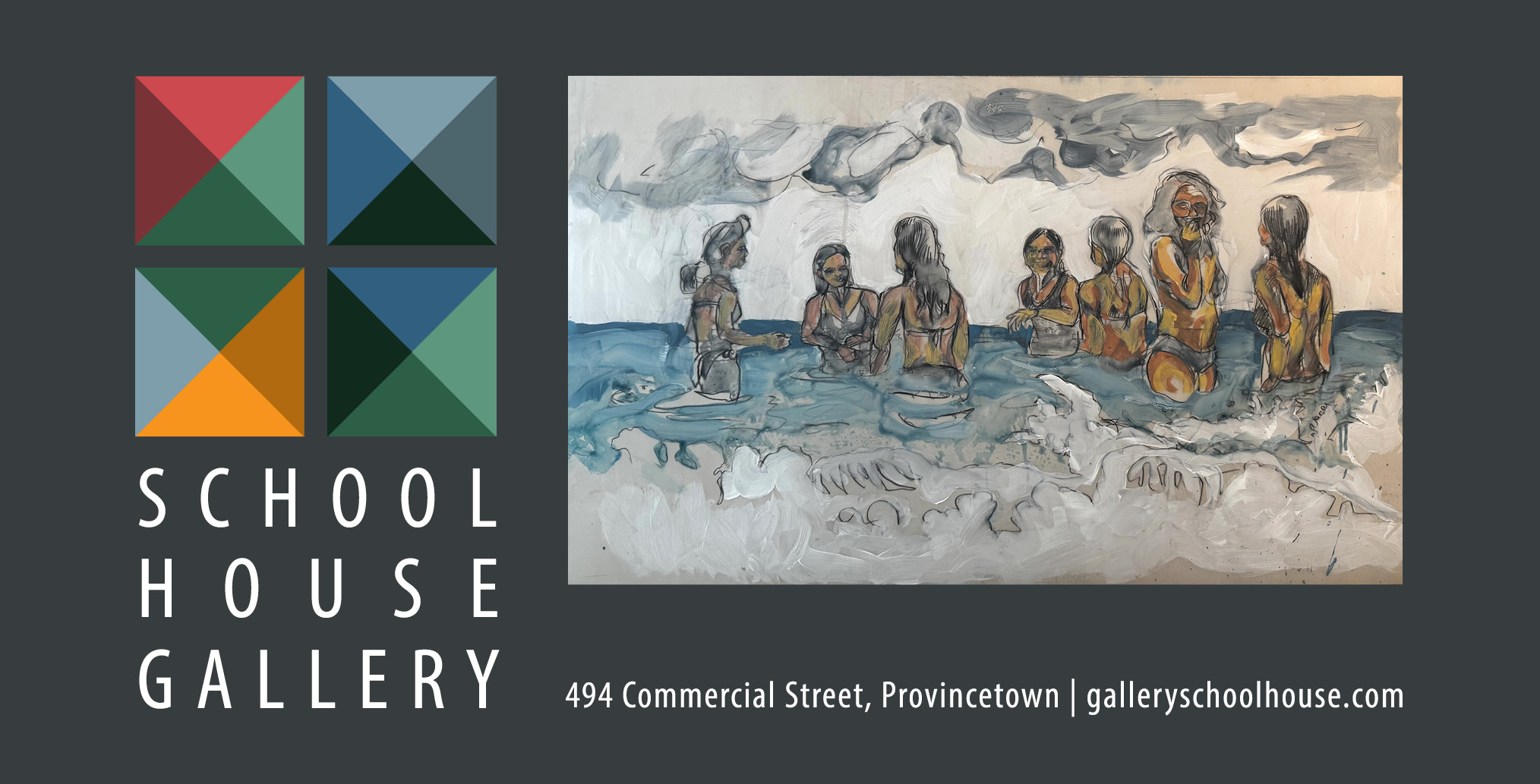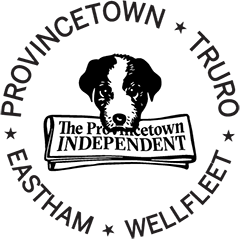When Elena Kovylyaeva arrived in Provincetown in October as a Fine Arts Work Center visual arts fellow, many of the shops in town were getting ready to close for the season. They were discarding unsold and unwanted merchandise in trash bins and side alleys along Commercial Street.
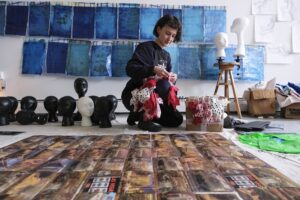
“All this cheap plastic stuff shipped here for the short summer tourist season, and then it’s thrown out,” says Kovylyaeva. “That’s what I’m interested in.”
Her studio at FAWC holds some of these throwaway items arranged in rows or piled haphazardly. They include Styrofoam heads; velvet décolletage necklace displays; boxes of plastic stands for sculpted crystals; faux-ivory Buddha heads with red tassels; small decorative mirrors; and deflated, brightly colored pool floats.
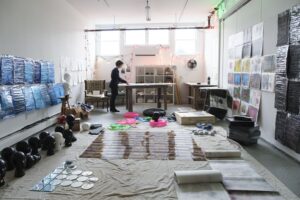
Kovylyaeva was born in Belovo, Russia in 1991, just as the dissolution of the Soviet Union was taking place. At five, she moved with her family to Düsseldorf when the German government opened its borders to ethnic Germans from the former U.S.S.R. After high school, she studied in Berlin and Leipzig before moving to Baltimore, where she received an M.F.A. in painting from the Maryland Institute College of Art. “I never lived anywhere for more than two or three years,” she says. “There’s not really a home that I can return to.”
Kovylyaeva’s creative path has been equally circuitous. When she moved to Berlin at 19, she studied film and comparative literature, although she says she always wanted to be a visual artist. “I was very shy. I needed time to grow up,” she says. “I don’t think you have much to offer when you’re that young.” In 2014, she enrolled in the Academy of Visual Arts in Leipzig, where she specialized in painting and graphic arts. Her schooling in Leipzig was academic and very traditional. “We did life drawing full-time for a few years, every day, all day,” she says. Eventually, Kovylyaeva left figurative artwork behind for a practice more rooted in abstraction and concerned with surface quality and found objects.
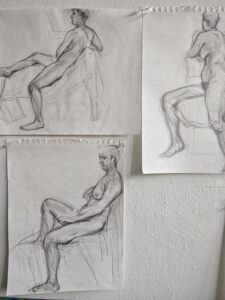
In the middle of her studio, arranged on the floor in a grid, are 112 postcard-size lenticular photos of Las Vegas. They depict images of buildings from the Strip that she found, oddly enough, in Provincetown.
“I want to do something with this stuff,” Kovylyaeva says, but at the moment she’s not sure what. “I just have to stare at things for a long time and wait for something to happen. I’ll look at them more and just move them around.”
This extended process of looking includes making as few decisions as possible. “The decisions,” she says, “are based on what the material itself can or cannot do. That’s why the decision isn’t coming from me deciding what I want or having an idea in advance.”
In Baltimore, Kovylyaeva made art by soaking fabric and paper with plaster. The images weren’t rendered. Her hand was largely absent. Rather, she let the material process do the work of building abstract, topographical surfaces.
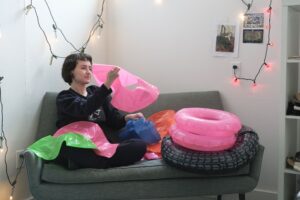
In Map, she built an image (or is it an object?) with layers of plaster, which simultaneously suggests earthly terrain, architecture fragments, and skin. The visual experience is important to Kovylyaeva as a painter, but she’s just as interested in the haptic, tactile quality of the material. “Perception enters through two different senses at the same time,” she says in her artist statement, “that are combined into something in between — touching with the eyes, looking through the hand.”
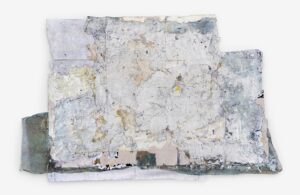
Kovylyaeva’s interest in this relationship between the tactile and the visual is also evident in Bones, a work made from diamond-shaped metal scraps. The title refers to Kovylyaeva’s use of the discarded “bones” of someone else’s project (she found this material in an abandoned factory in Baltimore). The sharp edges and pinkish colors, like raw flesh, evoke castoff bones after the meat has been devoured. The tips of this piece are perceived as sharp through touch and sight.
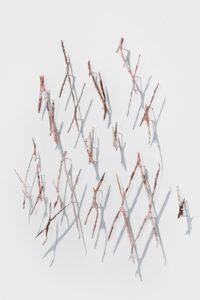
Making art from the scraps of a metal workshop was a turning point for Kovylyaeva. “That’s when I started using found things in my art,” she says. “I’d play around with them. The pieces themselves were defining the form and shape and the direction of the work. I didn’t have to decide.”
In Provincetown, Kovylyaeva made her first major piece with a Risograph printer at FAWC. She was interested not in using the printer itself but in the discarded master pages that a print job produces. In a Risograph, plastic sheets soaked in cyan, magenta, yellow, and black ink are used to layer colors and make a print. Afterward, they’re thrown away. Kovylyaeva retrieved the discarded sheets from the trash, put them between blank newsprint, and then used a roller to transfer the remaining ink from the sheet to the newsprint.
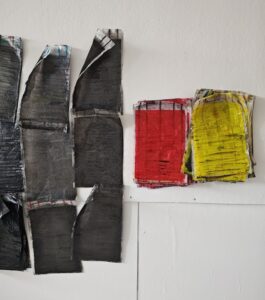
Titled Remnants, this work examined the intersection of materiality and memory, says Kovylyaeva. Repetition was part of the process. The visual remnants of each sheet faded even more each time it was used.
In addition to working with found materials, Kovylyaeva has spent time returning to an earlier creative practice. Affixed to her studio wall are images from life-drawing sessions at PAAM. As an art student, she says, she rebelled against this sort of work, but adds, “I always enjoyed life drawing. It’s similar to walking around and finding materials. You’re really in the moment. It’s actually pretty abstract thinking to translate shapes into lines.”
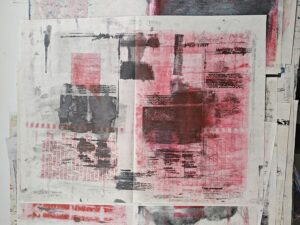
Kovylyaeva’s experience of Provincetown has affected her thinking about what comes next. When she returns to Germany, she’s not likely to settle in Leipzig. “I like that Provincetown is so far away from everything,” she says. “I have always lived in cities, and I found it nice to be far away from all of that. Right now, I don’t know where I’m going to choose.”
In her artist statement, she writes, “Searching for clues to inform my next piece, the act of looking itself becomes my grounding — the creative wandering a substitute for home when home is hard to find.”
Sharp Edges, No Decisions
The event: A showcase with Mengwei Ma, Elena Kovylyaeva, Carlos Arturo Zerpa, Kevin Fitchett, and Sara Martin
The time: Friday, April 18, 5 to 8 p.m.
The place: Fine Arts Work Center, 24 Pearl St., Provincetown
The cost: Free

